Protecting & Restoring Long Island's Peconic Bays
Learn about the benefits of living/ natural shoreline here and check out our progress on the Suffolk County Marine Environmental Learning Center Living Shoreline project in Southold.

The PEP Shoreline Adaptation Committee refers to the larger effort of both the subgroup and advisory group to review all 1:1 interviews and workshops with each stakeholder subgroup. Subgroups include implementation professionals and land owner/managing community groups. Subgroups & advisory groups represents each stakeholder’s perspective in the process of successful shoreline adaptation. Each group has expressed needs for resources and process documentation to make informed shoreline management decisions.
Innovative shoreline adaptation methods, such as nature-based solutions, can utilize a more natural approach to restore, enhance, and protect against coastal flooding and erosion. However, this is an emerging technique and barriers exist in local codes, zones, and permitting. PEP and NYSG works in coordination with local municipalities to review codes and policies, document hurdles, and suggest improvements that will result in resilient shoreline adaptation methods becoming a more feasible option across the Peconic Estuary.
Shoreline Adaptation Initiative Mission is to impact local municipality internal processes (codes & zoning) that currently create hurdles for appropriate shoreline management through their identification.
Our Process:
The Shoreline Adaptation Initiative works with an advisory group of Policy/lawmakers to understand context of shoreline adaptation in the Peconic Estuary. This group made up of representatives from NYDEC, PEP, NYSG, Suffolk County, DOS, and local government trustees and representatives.
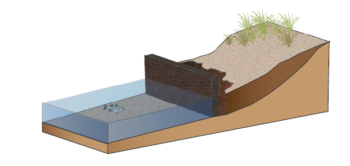
When hard shoreline structures are hit by waves, energy is reflected further down the shoreline disrupting natural sediment movement patterns and altering the shape of the coast. This process can alter the erosion and deposition patterns of sandy sediments, ultimately leading to shoreline destabilization. This destabilization can create problems for surrounding areas and may encourage nearby landowners to install hard structures along their property as well, further exacerbating the problem.
This “domino effect” of replacing natural shoreline with hard structures can result in the loss of important coastal habitats, including wetlands, beaches, and eelgrass beds. Habitat loss can negatively impact the fishing and tourism industries, as well as the wildlife that rely on these areas for feeding, reproduction, or nursery grounds.
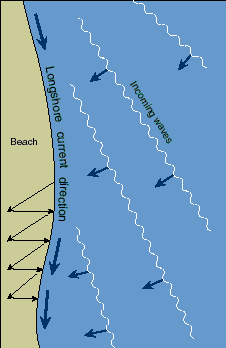
When waves hit the beach at an angle, sand is transported alongshore by wave energy. Waves also transport sand along the shore in a zig-zag pattern as they rush onto and off of the beach. This natural movement of sand is disrupted by hardened shorelines, which reflect wave energy and disrupt natural sand movement patterns, leading to erosion. Image taken from USGS.
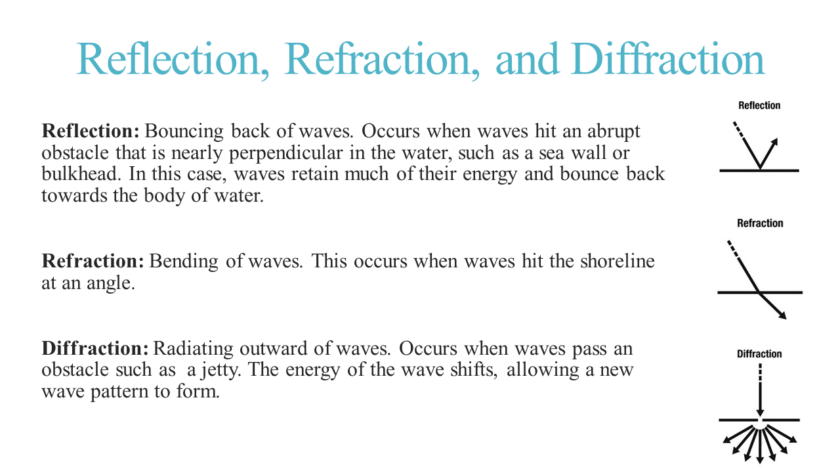
Hard shoreline structures also cause other problems—they can leach toxins, such as copper, chromium, and arsenic, into the surrounding water, further impacting the ecosystem. Additionally, these barriers prevent the natural migration of marshes inland as sea level rises, leading to their loss instead of allowing for their adaptation. Loss of marsh habitat negatively impacts wildlife and plant populations, and makes Long Island more vulnerable to coastal flooding, erosion, and storm damage.
With continued sea level rise and a potential increase in storm frequency and intensity due to a changing climate, there is a growing demand for shoreline protection on Long Island. The impacts of hardened shorelines are well established. Developing alternative forms of shoreline protection that do not negatively impact our shorelines, while also providing benefits to our coastal ecosystem, is a priority for PEP.
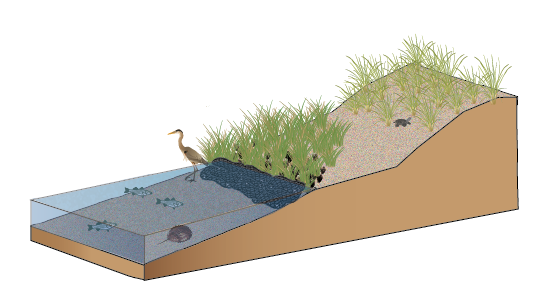
‘Living shorelines’ are a beneficial alternative to hardened shorelines. These ‘soft’ shorelines use native plants, shellfish, and other natural features such as rocks, sand, wood, coconut fiber, and shells to stabilize and protect coasts and decrease direct wave energy. Living shorelines are designed to mimic the natural environment and provide ecological benefits.
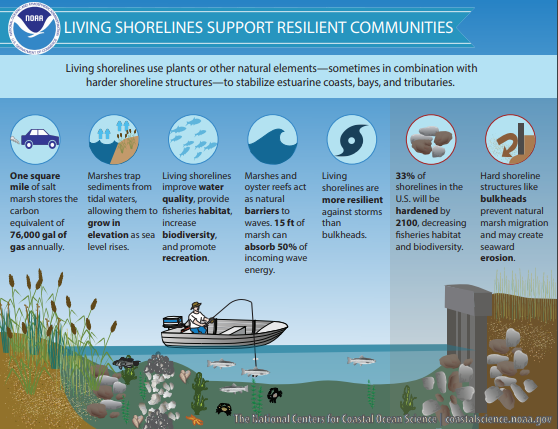
Sign up for News, Events and Information straight to your inbox.
